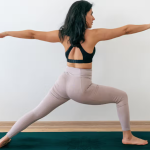Yoga is good for you. This fact has been pretty much established by scientists, researchers, experts and long-lived, healthy yogis themselves. Yoga is now prescribed by some GPs, people are referred to yoga classes by physiotherapists. It has been shown to alleviate the symptoms of high blood pressure, heart disease, lower back pain, depression, and stress. It also helps to increase muscle strength, combat osteoarthritis and improve balance.
So yoga teachers – who are doing yoga day in, day out, should be in tip-top shape and injury-free – right? Wrong. Yoga teachers are more likely than anyone to suffer from yoga-related injuries because they’re doing more yoga than most people, and like any other serious athletes, this can lead to injury.
How does yoga injury happen?
There are various ways that teaching yoga as a job can lead to an injury. Firstly, they’re doing a LOT of yoga. As well as the hours spent teaching, they are also planning lessons, which is often done through experimenting on their own bodies. Also, keeping up with their own home practice, going to their own lessons, extra workshops and continuing professional development courses all adds up. All this yoga CAN lead to injury through overworking the body, as we all have our own special physical idiosyncracies that mean that we over-use certain areas of our bodies and under-use others.
Teachers can also exacerbate pre-existing weaknesses by demonstrating when their muscles are not properly warmed up during lessons. Then there’s the lugging of big bags of yoga equipment from place to place; the possibility of injuring yourself while adjusting a student; plus, the physical aspect of the job can lead to exhaustion, which can then lead to a susceptibility to sustaining an injury.
In fact, it’s amazing that more yoga teachers aren’t injured!
Why this is a problem
The problem is that sustaining a yoga injury as a yoga teacher is, frankly, embarrassing. I should know, as I have recently had a back problem caused over time by the classic yoga problem of having a flexible lumbar spine and an inflexible upper thoracic spine. Spending long periods of time in headstand (at a recent convention I’d spent an hour and a half in various inversions) had compressed my spine to such a degree that I started to get numbness in my arms and other back issues.
I didn’t reveal my problems to my classes as it was awkward to admit that the very activity that I’m teaching to help improve the physical health of my students had actually damaged my own.
I know I’m not alone. Sometimes it’s easier to pretend that it’s an injury that you’ve got outside of yoga, just to avoid the awkward questions. But this doesn’t follow the yama (yogic principle) of satya (truth), so it’s best to stick to the real story.
Because being honest is going to help everyone, including you. If we pretend to our students that nothing’s wrong, we’re doing them a disservice.
Why it’s actually OK
Having an injury as a yoga teacher teaches patience, humility and caution. Being injured or incapacitated makes you more sympathetic and empathetic when your students are injured. Being injured makes you get off your mat and teach from within the class.
Being injured also makes you go to see other people outside of the yoga world. With my injury, I’ve seen osteopaths, massage therapists, physiotherapists, and I’ve even had a healing sound bath. Interestingly, each discipline throws light on different aspects of yoga. In fact, I even learnt a few things from going to see the podiatrist with my son. I feel like I should be going to each appointment with a notebook!
Why you shouldn’t ignore it!
It’s very tempting to ignore those little warning niggles that suddenly appear in our practice. A sore wrist, a twingeing back, and tender hamstring. If we leave those pain alerts, then the danger is that they will get even worse.
The first port of call is to tell your own yoga teacher. They are more experienced than you and have an objective viewpoint, and the likelihood is that they’ve seen it before. When I had a sore hamstring I was surprised at how vehement my teacher trainer was in telling me that I had to rest it – NOW. ‘Once it’s torn, it’s at least a year’s recovery time’, she told me sternly. Chastened, I duly rested.
Go to the doctor, the chiropractor, the physio, the massage therapist, the cranial-sacral person, the osteopath. Don’t stint on spending money on yourself at this point, see it as an investment in your career. And it honestly helps to try a few different methods to try to get on top of your injury.
Other serious athletes get injured ALL the time, and they’re not ashamed of it. They get the best possible treatment available, get better and then get back in the game. Just because most of them seem to get better by taking up yoga, doesn’t mean that those of us that are doing yoga are not susceptible to injury.
But getting an injury as a yoga teacher is OK – and can even help you become a better yoga teacher.













